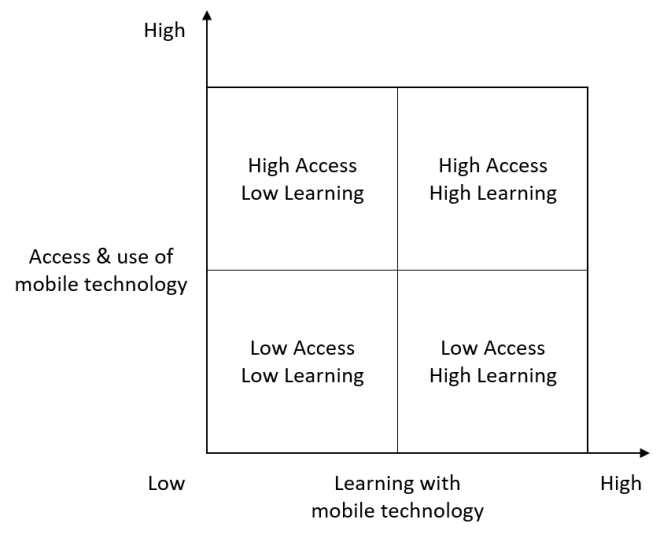There is an increase in the access and use of technology, especially among students. Students are getting excited about owning a smartphone or tablet. However, does this translate to their use of this devices for learning purposes? What is the relationship between technology access and learning with technology? Are students ready for m-learning?
The Findings
Despite the slow rate of technology improvement in Nigeria, research has shown that about 15.5 million people in Nigeria own and use smartphones. This is a whopping number and one would immediately think this general technology use would translate to learning with technology.
However, one thing that research has noted is the difference between using technology and learning with technology, especially in education. Even though many students and even teachers have access to and use technology for their normal day to day tasks, not many of them use these devices for teaching and learning purposes.
The reason for this is not far-fetched – teachers must be trained not just to use technology, but they must be trained to teach effectively with technology. In the same vain, students must be taught not just how to use technology (most already know how) but they must be deliberately taught to engage technology for learning purposes.
Technology Access and Learning Matrix
However, this particular article will consider and discuss a measurement for use of technology and actual learning with technology amongst students. In a two-dimensional quadrant that measures access and use of technology against actual learning with technology, we see four categories of students as shown in the image below. Quadrant 1 – Low Access, Low Learning; quadrant 2 – Low Access, High Learning; quadrant 3 – High Access, Low Learning and quadrant 4 – High Access, High Learning.

1. Low Access, Low Learning (Quadrant 1)
The first quadrant – Low Access, Low Learning reveals those students who have low access to technology and therefore learning is low as well. This seems logical and students may easily give an excuse that they cannot learn with technology because they do not have access to it. However, the number of students in this category is small as many more young people are having access to smartphones and tablets.
2. Low Access, High Learning (Quadrant 2)
The second quadrant – Low Access, High Learning relates to students who though they do not have access to great mobile devices, they are skilled in learning with technology and would maximise whatever technology tool they find. Again, not many students are in this category. Those who have a low access to technology, use it as an excuse to not being able to learn with technology. There are however a few students who would go to public libraries & tech centres, grab a friend’s device and make use of it for learning.
3. High Access, Low Learning (Quadrant 3)
The third quadrant – High Access, Low Learning describes students who own and use mobile devices for their daily activities but do not envisage these devices as a learning tool. Many students fall into this category. While they use their smartphones for calls, messages, chat apps, games, music, pictures etc. they do not use these device features to aid their learning. Understandably so, they do not know HOW to use technology for learning; they have to be taught to do so.
4. High Access, High Learning (Quadrant 4)
The last quadrant is the high access, high learning and this category of students use mobile devices and technology not just for their daily tasks and operation, but also for learning. They have identified and fully adopted mobile technology for learning purposes. They know how to make use of the features in a smartphone to aid their learning.
Student Readiness for Mobile Learning
The question, therefore, is
“Are students in institutions of learning ready to adopt mobile technologies for m-learning”?
Whereas most students already possess one smart mobile device, many of them only use it as a communicative and social tool. Only a few students see the learning possibilities that these mobile devices can afford and are engaging it. However, students are willing to use these devices to learn, if they are shown how to do so and some of the biggest challenges they face can be solved.
In addition, lecturers should be willing and ready to incorporate mobile technology into their teaching and model the proper use of these technologies for learning. The use of technology should not simply be an afterthought in the classroom but a part of the planning from the beginning. Proper guidance and instruction should be given to the students and early and appropriate feedback should be guaranteed, in order to provide quick help to students who might struggle.
When all these is in place, then we can begin to see teachers and students that engage the full capacity of technology for teaching and learning.

